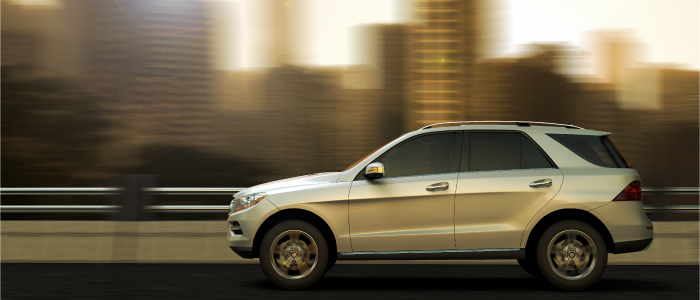Is It Time to Upgrade to a Bigger Vehicle?

Maybe your cute little two-seater or tiny econo-car saw you through college and into your first job. Perhaps it was those wheels that took you and your new spouse from your wedding reception, dragging behind all manner of clanking cans and best wishes. But after years of memories and miles of life together, is it time to upgrade your tiny transportation to something larger and more comfortable? Whether you need to make room for a new baby, a big pooch, or your next DIY project, a bigger vehicle might be the answer. Here are some reasons why.
Bigger Vehicle = More Room
Of course, with a larger car comes more room. You might translate that to more comfort, more passengers, or more space for hauling stuff. Regardless, the size difference between a sub-compact car and a mid- or full-size sedan can be as much as 20 cubic feet. You’ll notice that extra space particularly in the back seat, so if you expect to carry passengers often, a larger vehicle provides greater comfort for them. And for both front- and back-seat passengers on the tall side, those extra inches of leg room will be a welcome relief from the cramped space of a smaller car.
When you’re ready to step up to a larger vehicle, our auto financing experts can help. Call us at (512) 498-CARS (2277), or stop by any
branch to learn more.
Added Cargo Space
Small, economy-sized cars are not only limited on interior space, but also offer tight trunk room. Perhaps you barely can squeeze in the scant grocery bag and your gym gear. If you’re planning to use your new vehicle for frequent travel or to haul sports equipment or baby strollers, more trunk space might be a top priority for your next car.
Mid-sized sedans average around 15 cubic feet of trunk space, many offering 60/40 split rear seats that can as much as double that capacity. You can gain another 10–15 cubic feet of cargo space with a full-size sedan, and can choose one in which both back seats fold down.
Safety First
While small cars are safer than ever, the additional sheet metal required in larger vehicles brings added safety protection if an accident should occur. Generally, when small and large cars collide, the smaller vehicle will experience greater damage than the larger one due to a large vehicle’s sheer weight and the momentum it carries.
Regardless of the size of the vehicle you buy, always look for one that features standard safety equipment. Air bags, back-up sensors and rear cameras, blind-spot alerts and stabilization controls will help protect you in the event of a collision.
Baby-Friendly Car Features
If you are looking to go larger to accommodate a new baby, make note of how easy the back seat is to access and how comfortable it will be for a baby riding in a rear-facing car seat. The safest place for a car seat is in the center of the back row, so check that the model you’re considering will easily fit a car seat. (Watch for humps that might make it difficult to get the seat in and out.) Consider leather instead of cloth seats for easier clean up, and insist on four doors with tinted windows and keyless entry. Be sure the back seat has sufficient air vents, and that back windows don’t beam sunlight directly into the baby’s space. Also think about the vehicle’s height and how easy it will be to maneuver a baby, car seat, stroller, and other gear in and out without stooping and reaching.
Before You Buy
The late summer months are a great time to find deals on end-of-model year new cars as well as used cars. Before venturing out, get pre-qualified to make the shopping process easier and faster. Think about how you plan to use your next car, and make a list of your must-have features. Then do your research online to narrow your search to the makes and models that best accommodate your needs and your budget.
Thank you for your feedback.